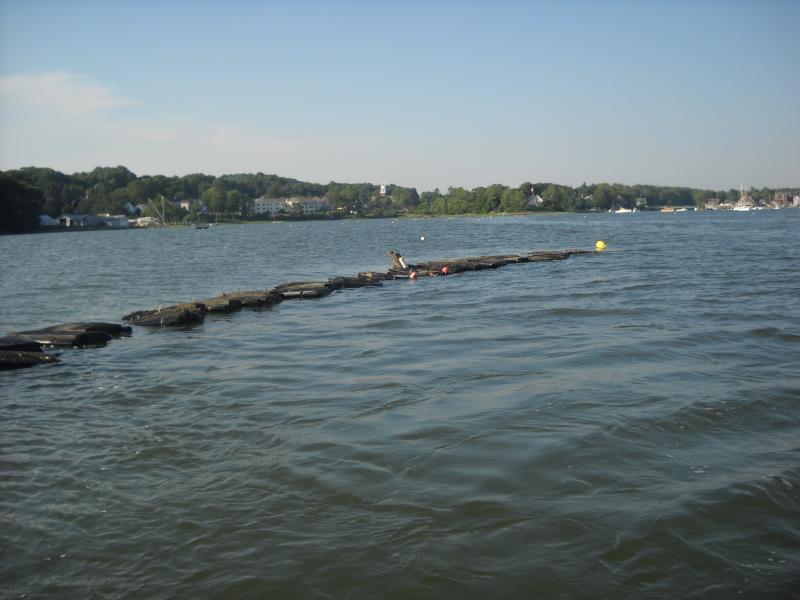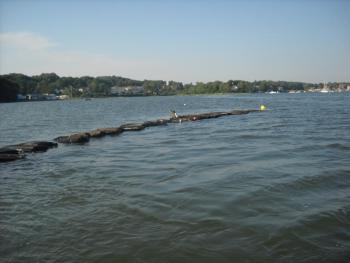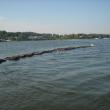Something in the water
 Oyster bags floating in the Damariscotta River’s estuary have become a familiar sight. Dozens of oyster farms use aquaculture techniques to harvest the seafood delicacy to markets around the world. Courtesy of the Damariscotta River Association’s Gardening Program
Oyster bags floating in the Damariscotta River’s estuary have become a familiar sight. Dozens of oyster farms use aquaculture techniques to harvest the seafood delicacy to markets around the world. Courtesy of the Damariscotta River Association’s Gardening Program
 Oyster bags floating in the Damariscotta River’s estuary have become a familiar sight. Dozens of oyster farms use aquaculture techniques to harvest the seafood delicacy to markets around the world. Courtesy of the Damariscotta River Association’s Gardening Program
Oyster bags floating in the Damariscotta River’s estuary have become a familiar sight. Dozens of oyster farms use aquaculture techniques to harvest the seafood delicacy to markets around the world. Courtesy of the Damariscotta River Association’s Gardening Program
It seems the Damariscotta River has a wondrous blend of the perfect water temperature and right amount of nutrients to grow the world’s most renowned oyster.
The Eastern oyster, grown in the Damariscotta River, has a delicious and distinctive taste, which makes it the most sought after oyster in the world, according to several biologists, fishermen and chefs.
Sarah Gladu, Damariscotta River Association’s education director, described the briny and clean taste of Damariscotta River oysters as distinctive. Seafood connoisseurs claim they taste the difference between a Damariscotta River oyster and those grown elsewhere.
“They are known worldwide for their outstanding quality and taste,” Gladu said. “No oyster in the world tastes like the ones harvested out of the Damariscotta River.”
The Eastern oyster that thrives in the Damariscotta River was once a staple of the Native American diet. European settlers became aware of the river’s supply of Eastern oysters in the 17th century. The settlers also discovered massive oyster middens along the river banks. The size of the heaps of discarded oyster shells appeared to show that Native Americans feasted on the native oyster for a couple thousand years.
But by 1875, the Eastern oyster was no longer found locally in mass quantities. Marine biologists believe pollution, environmental changes and temperature shifts contributed to the Eastern oysters’ disappearance in the river.
It wasn’t until the 1970s that biologists believed the Damariscotta River was a viable option for the commercial harvesting of oysters. Marine biologists reintroduced oysters into the river through aquaculture. At first, marine biologists introduced a new species into the Damariscotta River: European oysters. But the non-native species failed to thrive.
When marine biologists reintroduced the native species, the Eastern oyster not only thrived, it also turned out to be a true seafood delicacy. The Damariscotta River oysters proved so popular that the number of oyster farms quickly multiplied.
“It went from being just a few in the mid-1980s to dozens along the Damariscotta River,” said Chris Davis, co-founder of the Pemaquid Oyster Co. in Damariscotta. The popularity of the Eastern oyster has resulted in 65 oyster farms in Maine with an estimated land value at over $5 million, according to the Maine Department of Marine Resources.
He believes the Maine oyster industry owes a lot of its success to the work of Dr. Herbert Hedu, who taught at the Darling Marine Center in Damariscotta. Davis was one of several students in the 1980s inspired by Hedu’s teachings. After graduation, these students began growing Eastern Oysters in the Damariscotta River.
“He is the one that really inspired us to start growing Eastern oysters,” Davis said. “What we discovered is that the water is ideal for the native species. The Eastern oyster thrived in these waters because there is a lot of phytoplankton and the temperature is perfect for producing a wonderful tasting oyster.”
Like many of the oyster farms on the Damariscotta River, Pemaquid Oyster Co. distributes its harvest to about 40 local restaurants and seafood distributors in Boston, New York and Philadelphia.
Ralph Smith is the owner of the Boothbay Harbor restaurant The World is Mine Oyster. He said the Damariscotta River-grown oysters are popular with native Mainers and tourists. He uses Glidden Point Oyster Sea Farm in Edgecomb to supply his restaurant.
“The Damariscotta River oysters are the most perfect ones in the world,” Smith said. “Their thick shells and briny oysters come from patience and growing a perfect estuary.”
Smith also credits Glidden Point Oyster Sea Farm owner Barb Scully and other local oyster farms for producing a world-class tasting oyster.
“We are blessed to have Barb and the others who all pay attention to detail and their stubbornness for oyster perfection is unsurpassed,” Smith said.
Locally, oyster farms harvest between 500,000 and 2 million oysters a year from the Damariscotta River, according to Davis.
Event Date
Address
United States






















